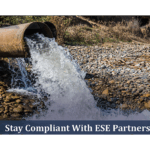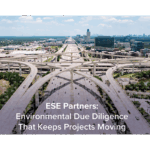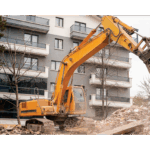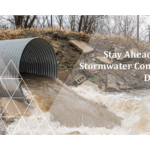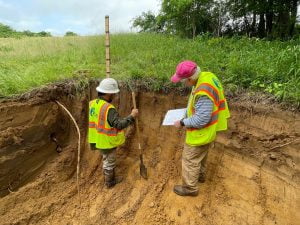
In the field of environmental site assessment, a Phase 1 Environmental Site Assessment (ESA) is a critical tool for evaluating potential environmental risks associated with a property. Specifically, in Jacksonville, Florida, a Phase 1 ESA plays a crucial role in ensuring that stakeholders are well-informed about the environmental conditions and potential liabilities of a property before any significant transactions or developments occur.
Understanding Phase 1 Environmental Site Assessment
Before delving into the specifics of Jacksonville’s Phase 1 ESA, it is essential to understand the purpose and key components of this assessment. A Phase 1 ESA serves as a comprehensive investigation to identify potential environmental risks that may exist on or near a property. This assessment aims to provide a detailed understanding of a property’s history, previous land uses, and potential sources of contamination.
Purpose of Phase 1 Environmental Site Assessment
The primary purpose of a Phase 1 ESA is to minimize potential liabilities associated with environmental contamination. By conducting this assessment, property owners, developers, and lenders can make informed decisions regarding property acquisitions, investments, or redevelopment plans. Furthermore, a Phase 1 ESA ensures compliance with relevant regulations, guidelines, and standards, which safeguard environmental health and public safety.
Imagine a scenario where a developer is considering purchasing a piece of land in Jacksonville to build a residential complex. Without conducting a Phase 1 ESA, the developer would be taking a significant risk. The assessment would uncover any potential environmental hazards, such as underground storage tanks, chemical spills, or previous industrial activities that might have left behind contaminants. Armed with this knowledge, the developer can make an informed decision about whether to proceed with the purchase, negotiate the price based on the cost of remediation, or explore alternative locations.
Key Components of Phase 1 Environmental Site Assessment
A Phase 1 ESA encompasses various components that collectively provide a comprehensive evaluation of a property’s environmental condition. These components typically include:
- Site historical research and document review
- Physical inspection of the property and surrounding properties
- Interviews with current and past property owners, occupants, and local officials
- Review of environmental maps, records, and databases
Site historical research and document review involve digging into the property’s past, examining historical records, aerial photographs, and old maps. This process can reveal valuable information about previous land uses, such as whether the property was once a gas station, a dry cleaner, or a manufacturing facility. By understanding the site’s history, environmental professionals can identify potential sources of contamination and focus their investigations accordingly.
During the physical inspection, environmental professionals meticulously examine the property and its surroundings. They look for signs of potential contamination, such as stained soil, unusual odors, or suspicious containers. Additionally, they assess neighboring properties to determine if any activities or conditions could pose a risk to the subject property.
Interviews with current and past property owners, occupants, and local officials provide valuable insights into the property’s history and any known environmental issues. These interviews can uncover information that might not be documented elsewhere, such as undocumented spills or previous remediation efforts.
Reviewing environmental maps, records, and databases is another crucial component of a Phase 1 ESA. Environmental professionals consult various sources to identify any known contaminated sites in the vicinity, assess the proximity of potential pollution sources, and evaluate the overall environmental quality of the area.
By analyzing these components, environmental professionals can identify potential environmental risks and recommend appropriate actions to mitigate them effectively. This comprehensive evaluation ensures that property owners, developers, and lenders have the necessary information to make informed decisions and protect both their investments and the environment.
The Scope of Jacksonville’s Phase 1 Environmental Site Assessment
When conducting a Phase 1 ESA in Jacksonville, it is crucial to consider the specific geographic area covered and the types of environmental risks that are assessed.
Geographic Area Covered
Jacksonville’s Phase 1 ESA typically encompasses the entire property being assessed, as well as the surrounding areas. This approach ensures a comprehensive evaluation of potential environmental risks that may affect the property and its surrounding ecosystem. It also takes into account any potential sources of contamination from nearby properties or industrial activities.
Types of Environmental Risks Assessed
During a Phase 1 ESA in Jacksonville, a wide range of environmental risks are assessed. These risks may include, but are not limited to, potential soil contamination, groundwater contamination, asbestos-containing materials, mold, lead-based paint, and underground storage tanks. By evaluating these risks, stakeholders can proactively address any existing or potential environmental issues and develop appropriate mitigation strategies.
The Process of Conducting Phase 1 Environmental Site Assessment in Jacksonville
The process of conducting a Phase 1 ESA in Jacksonville involves several key steps. These steps are carried out by experienced environmental professionals who follow industry best practices and adhere to local regulations.
Initial Site Inspection
The first step in Jacksonville’s Phase 1 ESA process is the initial site inspection. During this inspection, environmental professionals visit the property and its surrounding areas to visually assess potential environmental risks. This includes examining the current and historical uses of the property, as well as identifying any visible signs of contamination or potential sources of pollution.
Historical Review of the Site
Following the initial site inspection, a comprehensive historical review is conducted. This involves researching historical records, maps, aerial photographs, and available public documents to identify any past uses, owners, or known environmental issues associated with the property. Environmental professionals also review historical data related to nearby properties to assess the potential for contamination migration.
Evaluation of Surrounding Properties
In addition to the historical review, the evaluation of surrounding properties is a vital step in Jacksonville’s Phase 1 ESA process. This evaluation aims to identify potential sources of contamination from nearby properties or industrial activities that might impact the assessed property. It involves assessing the proximity of known contaminant sources, such as landfills or hazardous waste sites, and evaluating factors that may contribute to contamination migration, such as groundwater flow patterns.
Findings from Jacksonville’s Phase 1 Environmental Site Assessment
The findings from Jacksonville’s Phase 1 ESA provide stakeholders with crucial information about the identified environmental risks and their potential impact on the property and the local ecosystem.
Identified Environmental Risks
One of the primary outcomes of a Phase 1 ESA in Jacksonville is the identification of potential environmental risks associated with the assessed property. These risks may include the presence of hazardous substances, potential groundwater contamination, soil contamination, or the existence of underground storage tanks. By pinpointing these risks, stakeholders can evaluate their potential implications and make informed decisions regarding further investigations or mitigation measures.
Potential Impact on Jacksonville’s Ecosystem
Understanding the potential impact of identified environmental risks on Jacksonville’s ecosystem is crucial for sustainable development and environmental stewardship. A Phase 1 ESA provides a basis for evaluating the potential effects of contamination on natural resources, wildlife habitats, and sensitive ecological areas. This knowledge enables stakeholders to develop appropriate strategies to minimize or mitigate any adverse effects and protect Jacksonville’s unique environment.
Next Steps After Phase 1 Environmental Site Assessment
After completing a Phase 1 ESA in Jacksonville, certain next steps must be taken to ensure the effective management of identified environmental risks and maintain compliance with local regulations and guidelines.
Phase 2 Environmental Site Assessment
If the Phase 1 ESA uncovers potential environmental risks that require further investigation, a Phase 2 ESA is typically recommended. A Phase 2 ESA involves more detailed sampling, analysis, and laboratory testing to confirm the presence and extent of contamination, if any. The results of a Phase 2 ESA provide stakeholders with a more in-depth understanding of the identified risks and guide the development of appropriate mitigation strategies.
Mitigation Strategies for Identified Risks
Based on the findings of the Phase 1 ESA, stakeholders can develop effective mitigation strategies to address identified environmental risks. These strategies may include remediation plans, containment measures, or implementation of environmental management systems. By implementing these measures, stakeholders can minimize potential liabilities, protect public health and safety, and contribute to sustainable development in Jacksonville.
In conclusion, a Phase 1 Environmental Site Assessment in Jacksonville is an essential tool for evaluating potential environmental risks associated with a property. By understanding the purpose, key components, and scope of this assessment, stakeholders can effectively manage environmental liabilities, make informed decisions, and contribute to the safeguarding of Jacksonville’s unique ecosystem.
Ready to ensure your Jacksonville property is environmentally sound and compliant with all regulations? Look no further than ESE Partners. Our team of seasoned environmental engineers and scientists specializes in Phase 1 Environmental Site Assessments, providing you with the expertise needed to responsibly move your business forward. At ESE Partners, we understand the intricacies of environmental due diligence and offer a suite of services to address any concerns uncovered during your assessment. From remediation plans to compliance strategies, we are equipped to handle all aspects of environmental problem-solving. Don’t let changes in regulatory processes slow you down; let us expedite your DA permit applications and requests with our innovative approaches. Request A Proposal today and partner with the premier provider of environmental services in Jacksonville and beyond.

